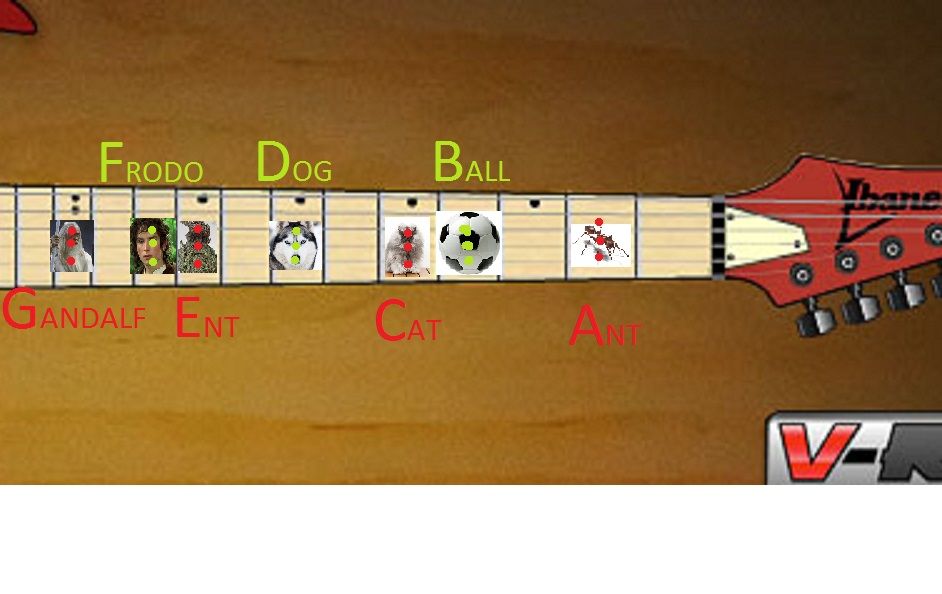Just wondering how people visualise and map out the fretboard when playing. I always struggled with it but then was taught a nice way of mapping out my board by my teacher. Instead of thinking of single notes I visualise the board through triads, such as the much loved D major shape on the G, B and E string. I use this shape all the way up to the 12th fret and use pictures and themes to map it out.
As shown in the following pic my first theme is 'Star Wars'

Around the D major and E Major triad I imagine the shown pics on the fretboard, the middle note (Root) always being the note which the picture represents, such as E for Ewok.

Carrying on from there I use a 'Things in the living room' theme up to the 12th fret.
I also do this for the next three strings up. Think of the A chord triad shape for these strings. I have a 'Things in the Garden' theme followed by a 'Lord of the Rings theme for these strings. See below.

Once I was au fait with the major triads up to the 12th obviously I could then apply it higher up by repeating.
I then worked on visualising the intervals around the pictures, and then worked on linking the relevent pictures eg, Droids, Dog, Daisy (From super Mario, another theme of mine).
Anyway my point is that its sometimes easier to visualise pictures rather than letters. It might seem stupid but it has really helped me.